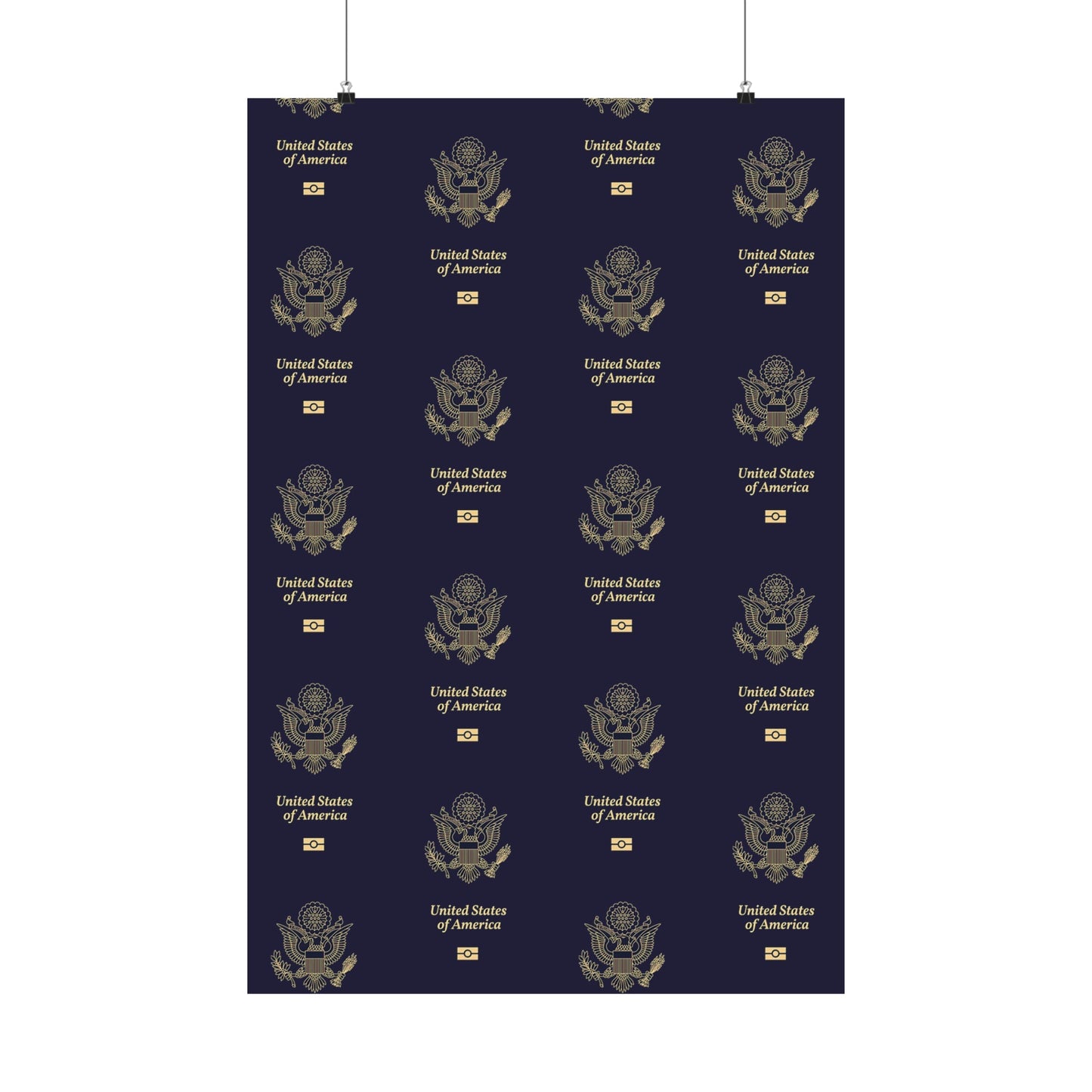U.S. Passport themed Matte Vertical Posters
U.S. Passport themed Matte Vertical Posters
Couldn't load pickup availability
Unveil a touch of American travel artistry with our premium matte vertical posters. Museum-Grade Excellence: Elevate your art with our posters made from 175gsm fine art paper, a museum-grade archival paper. The result is excellent printing fidelity and vibrant color reproduction, ensuring your digital artwork comes to life with unparalleled detail. Eco-Friendly and Responsible: Beyond art, we champion eco-conscious choices. Our U.S. Passport themed canvas is both recyclable and FSC-certified, reflecting our commitment to the environment. The frame is crafted from responsibly sourced radial pine, derived from renewable forests. Two Available Sizes: Tailor your art to your vision with two available sizes, offering versatility in how you choose to display your creativity. Introduce a piece of American-inspired art into your world with our premium matte vertical posters. Crafted with quality and environmental responsibility in mind, these posters are more than just decor; they're a testament to your commitment to both artistry and the planet. Whether it's your own work or a stylish addition to your space, these posters are poised to make your art stand out. The history of the American passport is a fascinating journey that reflects the evolving needs and concerns of a nation. Here's a brief overview of its development: Early Use: In the early days of the United States, passports were mainly issued to American diplomats and government officials traveling abroad. These documents often included a description of the bearer's physical appearance and purpose of travel. Passport Act of 1855: This was a significant milestone in the history of American passports. It made it mandatory for American citizens traveling abroad to have a U.S. passport. Before this, it was common for travelers to use alternative documents, such as a letter from the Secretary of State. Photographs and Identifying Features: The use of photographs in passports became more widespread during the early 20th century. In 1914, the U.S. started including photographs in passports to enhance security and reduce the risk of fraudulent use. Passports also included more identifying features of the bearer, such as height and eye color. The 20th Century: Passports underwent various changes and innovations throughout the 20th century. During wartime, restrictions on travel were imposed, and passports sometimes contained specific information about wartime travel conditions. Post-World War II, the design and security features of passports continued to evolve to combat forgery. e-Passports: In 2006, the U.S. introduced electronic passports, often referred to as e-passports. These passports contain a small electronic chip embedded in the cover, which stores the bearer's biographical information and a digital photograph. This technology has enhanced security and streamlined customs and immigration procedures. Modern Passports: Today, American passports are highly secure documents with advanced features like biometric data, holograms, and microprinting. They serve not only as proof of citizenship but also as a key tool in border security and international travel. Recent Developments: The U.S. State Department regularly updates the design and security features of American passports to stay ahead of counterfeiters. They have also introduced the "passport card," a more compact and wallet-sized alternative for certain types of travel. The history of American passports reflects the changing nature of international travel, concerns about security, and the need for more sophisticated forms of identification. Over the years, passports have evolved to incorporate advanced security features and biometric data while continuing to serve as essential travel documents for U.S. citizens.
| 9" x 11" | 24″ x 36″ | |
|---|---|---|
| Width, in | 9.00 | 24.00 |
| Length, in | 11.00 | 36.00 |
Share
















